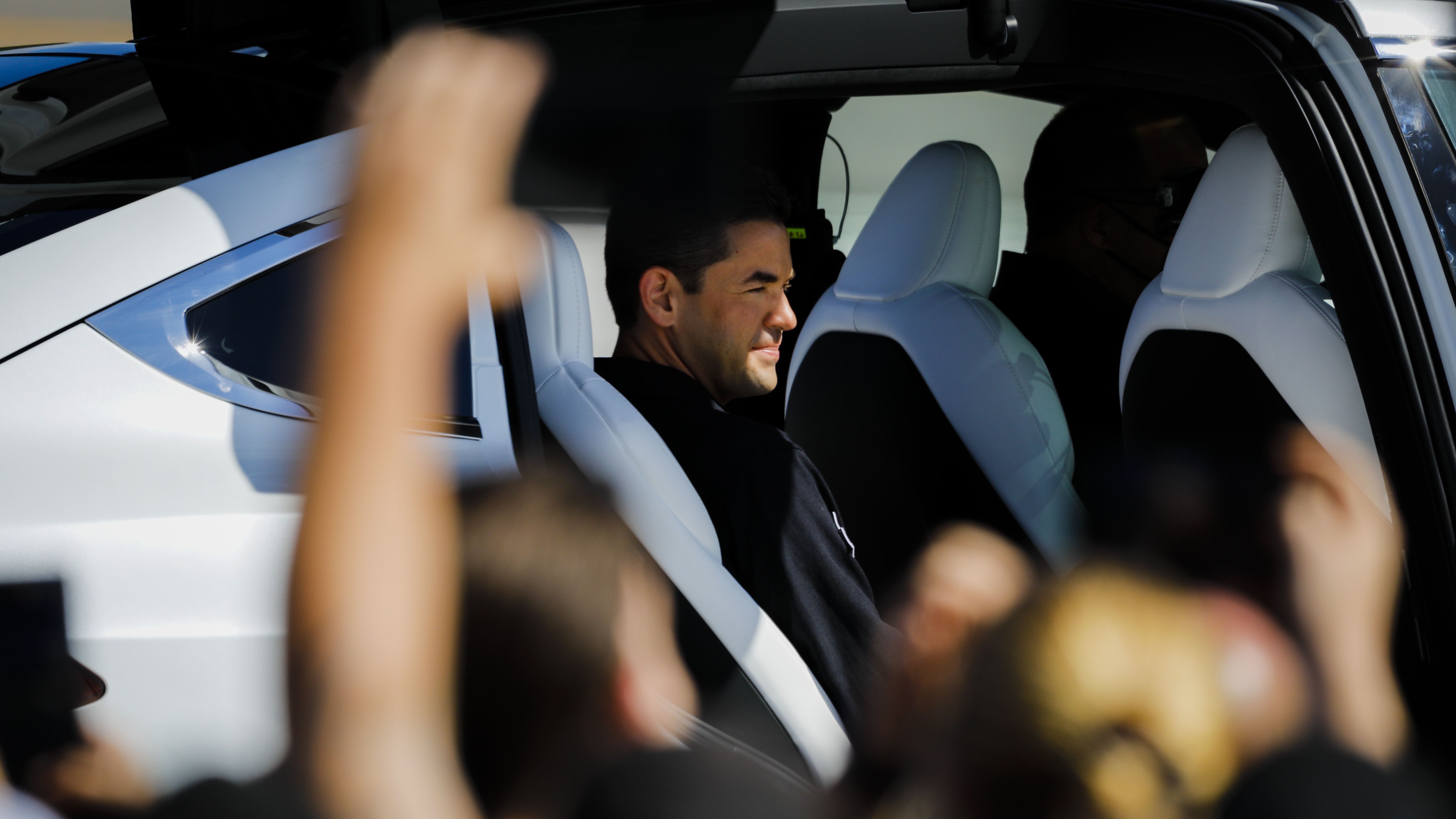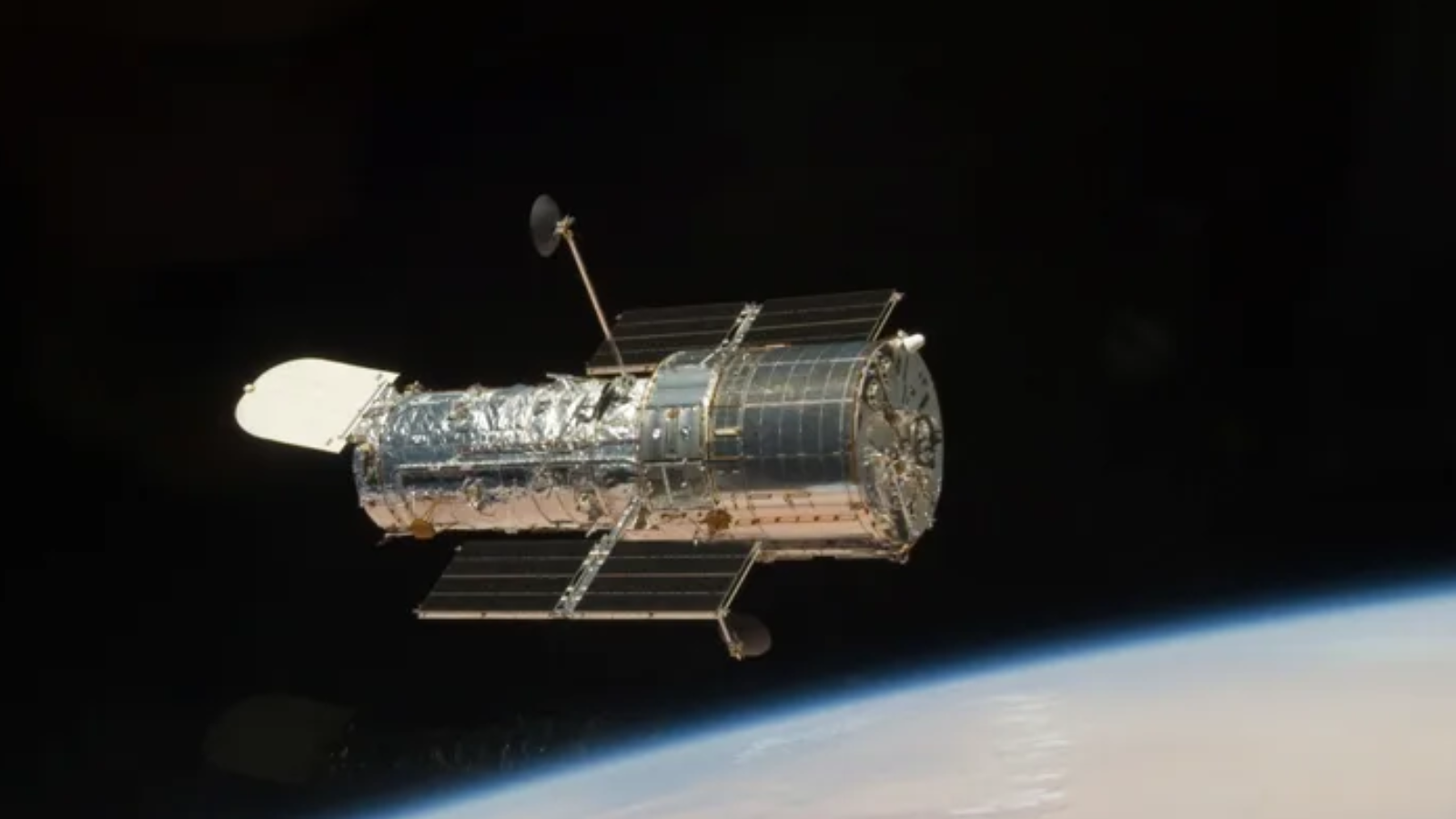A billionaire wanted to save the Hubble Telescope — here's why NASA politely declined
NASA isn't interested in a commercial Hubble reboost mission. For now, that is.

It's been 34 years since the Hubble Space Telescope launched into the harsh and unforgiving environment of Earth orbit. It's sitting about 320 miles (515 kilometers) above our planet right now, exposed to solar radiation, freezing temperatures and micrometeoroid impacts while delivering breathtaking and textbook-altering images of the universe to us.
Thirty-four years under that kind of stress takes its toll. Just earlier this week (June 4), NASA announced one of the Hubble Space Telescope's three remaining gyroscopes — which help scientists make sure the craft is pointing in the correct direction — has failed. The observatory will now shift into one-gyroscope mode, keeping the other still-working gyro in reserve so there's a backup option to turn to when the time comes. This plan is expected to keep Hubble alive until the mid-2030s. But what would happen after that? Well, perhaps the end of Hubble. Perhaps not.
The thing is, Hubble's orbit is very slowly getting lower and lower as time goes by because of our planet's atmospheric drag. It's also just generally getting old, and with age comes some weariness. This presents two paths for Hubble's future. On one hand, scientists can tap into the observatory's steady descent and perform a controlled reentry upon which most (but not all) of the spacecraft will burn up in Earth's atmosphere.
Or, scientists can boost Hubble to a higher orbit where it can rest for a while — potentially allowing for time to decide if a more in-depth servicing mission can be done, sort of like the old days. Which brings us to the billionaire with an ambitious plan.
In 2022, Jared Isaacman, who funded and commanded the Inspiration4 all-civilian private space launch and is looking to do the same with his Polaris program, announced a proposal to save Hubble with a commercial mission in collaboration with SpaceX. It was associated with NASA's request for private companies to develop ideas about how to go with the Hubble boosting route. The idea was indeed pondered and discussed at length (including with a multi-month feasibility study) but, in short, NASA eventually didn't decide to go for it.
"Our position right now is that, after exploring the current commercial capabilities, we are not going to pursue a reboost," Mark Clampin, director of the agency's Astrophysics Division and Science Mission Directorate at NASA Headquarters, said during a June 4 conference updating the public about the Hubble Telescope's status. "We greatly appreciate the in-depth analysis conducted by the NASA team, SpaceX and Polaris program, and our other potential partners. It's certainly given us better insight into considerations for developing future commercial reboost missions."
Breaking space news, the latest updates on rocket launches, skywatching events and more!
There has been quite a bit of back and forth lately between Isaacman, space experts, journalists, and even the public when it comes to servicing Hubble privately. A recent NPR investigation that attained internal NASA emails through a Freedom of Information Act request sparked debate, for instance, as it revealed a variety of reactions NASA officials had to the idea. Isaacman himself has also suggested that, if the plan didn't pan out, politics could be to blame, as the NPR article also touches on. But during the latest Hubble conference, we may have earned some of the clearest insight into the agency's reasoning yet.
It basically seems like the risks involved aren't necessarily worth taking right now, seeing as Hubble is technically doing just fine. "We still believe it has a very high reliability," Patrick Crouse, Hubble's project manager at NASA's Goddard Space Flight Center in Maryland, said during the conference. "We can operate Hubble very successfully doing groundbreaking science through the rest of the 20s and into the 2030s."
In terms of those risks, Clampin explained what that aforementioned feasibility study found, including premature loss of science and some technology challenges. It's possible, Clampin said, that a mission like this could contaminate the telescope's mirror. Because Hubble is an ultraviolet optical telescope, even small amounts of volatiles can get on the mirror and threaten the observatory's sensitivity. "We believe we need to do some additional work to determine whether the long-term science returns will outweigh the short-term science risks," Clampin said.
It's also worth noting, Clampin explained, that a commercial Hubble servicing mission would involve a new rendezvous, docking and undocking procedure, a spacecraft that has never visited the telescope before and a new destination. This introduces lots of variables, and these thoughts indeed echo what some of those NPR-attained emails implied.
"The last time we went to Hubble, it was on the space shuttle, and it was quite a long time ago," Clampin said. "And, of course, Hubble is an old spacecraft now; a lot of the people who were very involved in the early serving missions have retired and there's a lot of work we would have to do to get back up to speed on how to do that."
This is all to say, though, that a commercial servicing mission is not out of the question for the future. As both presenters emphasized, it is probably best to just delay such a risky mission until absolutely necessary — and seeing as Hubble's doing pretty okay for the foreseeable future, it doesn't appear to be absolutely necessary.
"There's a greater than 70% probability of operating at least one gyro through 2035," Crouse said. "We currently have four instruments that have been robust and highly productive, and reliability is expected to remain very high.
"So we do not see Hubble as being on its last legs."

Monisha Ravisetti is Space.com's Astronomy Editor. She covers black holes, star explosions, gravitational waves, exoplanet discoveries and other enigmas hidden across the fabric of space and time. Previously, she was a science writer at CNET, and before that, reported for The Academic Times. Prior to becoming a writer, she was an immunology researcher at Weill Cornell Medical Center in New York. She graduated from New York University in 2018 with a B.A. in philosophy, physics and chemistry. She spends too much time playing online chess. Her favorite planet is Earth.

